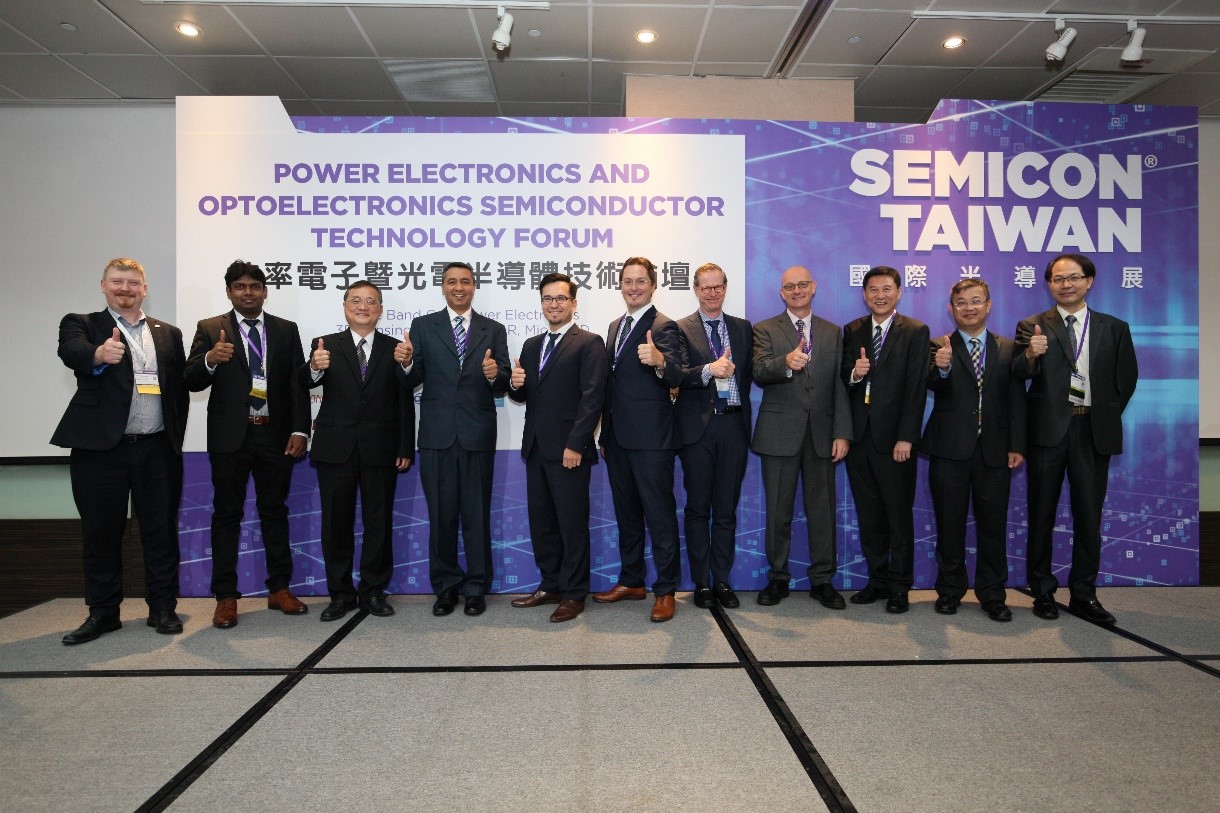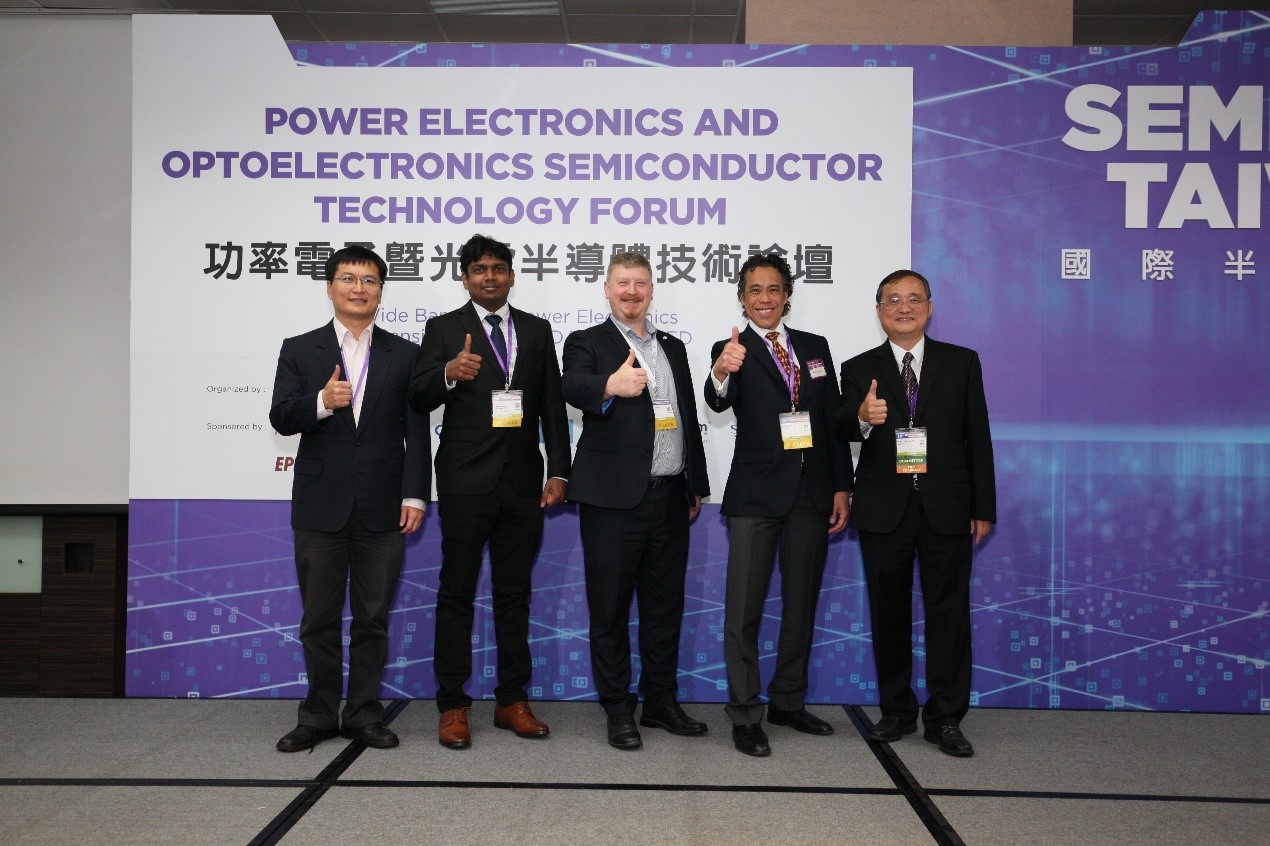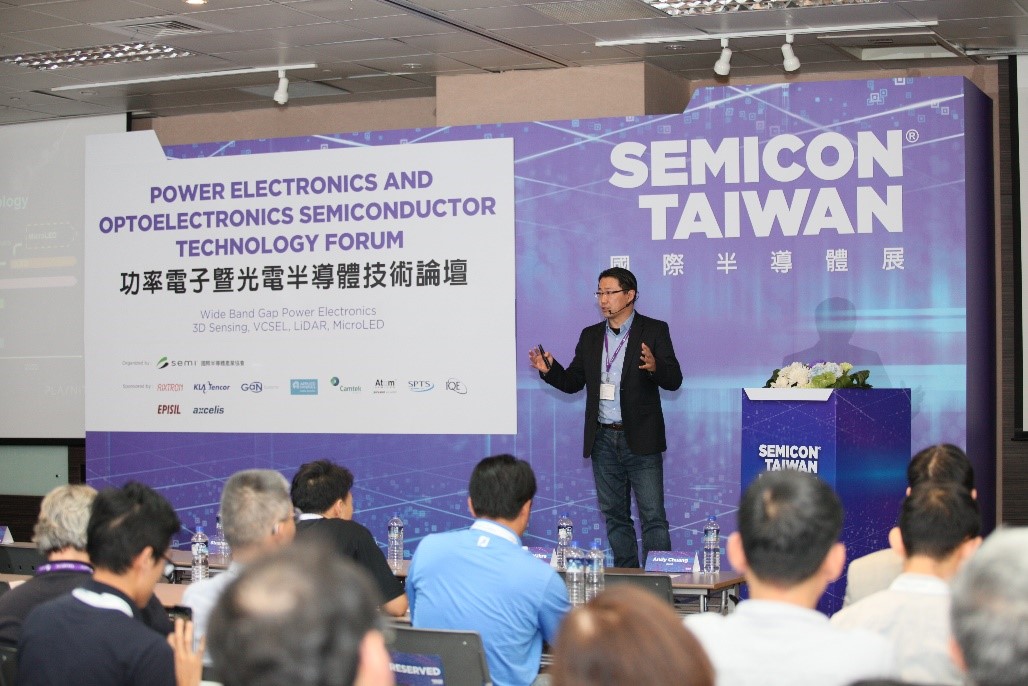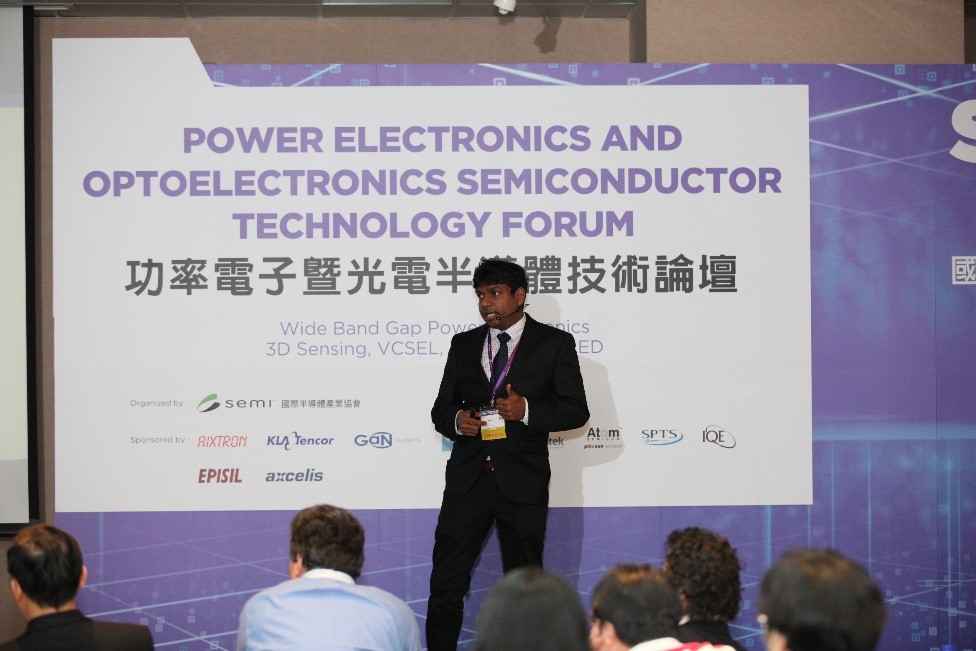SEMICON Taiwan 2018 International Semiconductor Exhibition was held during September 5 to 7 at TWTC Nankang Exhibition Hall. As the second largest SEMICON exhibition worldwide, it gathered 680 manufacturers with more than 2000 booths, reaching a new record high. Major equipment manufacturers were present, including Aixtron, VEECO, Kulicke & Soffa and MPI Corporation.
Power Electronics Optoelectronic Semiconductor Technology Forum was held at the meantime. In the afternoon session, manufacturers such as TriLumina, PlayNitride, KLA-Tencor, Camtek and SPTS Technologies successively updated their latest technical progress and shared their view on the advanced market trend of power components and optoelectronics industry.

Theme One: VCSEL LiDAR
Founded in 2011, TriLumina is equipped with flip chip laser arrays technology for 3D sensing and self-driving assistance system, noted Brian P. Wong, CEO of TriLumina. The company provides VCSEL epitaxy patents, VCSEL chips and module design. In terms of module design, TriLumina combines VCSEL flip chip and micro lens, which, together with solid state electronic beam steering, is then used in solid state flash LiDAR. TriLumina supplies LiDAR products of short range, medium range and long range. Take VCSEL arrays of 300 pulse power as an example. It can reach a sensing distance of 250m, which, compared to EEL (edged-emitting LiDAR), is the predominant advantage of VCSEL products. According to TriLumina, its VCSEL product performance can better meet the requirements of the reliability standard, AEC-Q100 Grade 1 (-40℃-125℃).
Besides, Brian holds the idea that 3D sensing and LiDAR products will become the two major driving forces of VCSEL market.
LEDinside Prospective
According to 2018 Infrared Sensing Application Market Report by LEDinside, a division of TrendForce, LiDAR laser market value is expected to reach USD 154 million in 2020. The main driving forces include automotive LiDAR (passenger / truck), intelligent transport system, drone, measurement, sweeping robot, etc. Car sensors include millimeter-wave radar, ultrasonic radar, LiDAR and CCD / CMOS image sensors. Radar has been widely used in ADAS system for mid/high level vehicles and aggressively penetrated into standard level. However, LiDAR has the limitations of product size and cost and hasn’t been widely used. Currently, it is commonly adopted in autonomous car in trial use. Owing to the increase of market demand and technology, LiDAR will enter the market on level 4 and level 5. In addition, LiDAR has advantages in long-distance detection and depth resolution.
LEDinside indicates that there are four main technical challenges for the development of LiDAR in automotive market. In the future, some improvements have to be made such as sensing range, angular sensing resolution, field of view and computational challenges. Others include the decrease of product size and cost. In addition, there are challenges during harsh environments such as snow, rain, dust, dirt or collision.

Theme Two: Micro LED
Still importantly, Dr. Li Yunli of PlayNitride and Akash Nanda, senior application engineer of KLA-Tencor, were specially invited in Power Electronics Optoelectronic Semiconductor Technology Forum.
Li Yunli, CEO of PlayNitride, explained that Micro LED features with better display quality and a wide range of color gamut. Compared to OLED that entails improvement in product reliability, Micro LED is more qualified to be the future ultimate display technology. In addition, fitted with sensing components and transparent display, Micro LED can create diversified emerging market applications. And transparent display even requires high brightness and high penetration rate. However, Micro LED encounters technical bottlenecks such as chip efficiency, transfer yield, detection and repair. If all these can be resolved, product cost will be another advantage. PlayNitride has launched RGB Micro LED (flip chip) of 15µm x 30µm and single-color Micro LED (vertical chip) of 2.5µm x 2.5µm, said Li Yunli. Its mass transfer technology can achieve yield of 99.9% and it will struggle to improve product yield, reducing defect. Meanwhile, PlayNitride provides targeted solutions - SMARTech (Selective Mass Addressable Repair Technology) for tricky repair problems in the industry so far, by which accurate maintenance can be achieved.

Optical inspection defect contains technologies such as image recognition, photoluminescence - PL and photophase. Akash Nanda, senior application engineer of KLA-Tencor pointed out that photophase technology recreates 3D image maps based on the principle that the surface of phase signal is uneven after light reflex. Candela equipment can provide surface defect inspection, contributing to better chip quality.

LEDinside Prospective
According to the latest research report of LEDinside「2019 Global LED Video Wall Market Outlook - Cinema, Rental Market and Price Trend」, display manufacturers tend to develop HD display image. Thereby, a market competition among LED, LCD and LED display manufacturers (SONY, Samsung Electronics, LGE, Macroblock, Harvatek and NationStar, etc) will arise in fine pitch and ultra fine pitch (lower than P1.0) display fields. It is believed that LED display will enter the high-end niche market in the next 3 to 5 years as technical bottlenecks resolved.
Author Joanne / LEDinside















